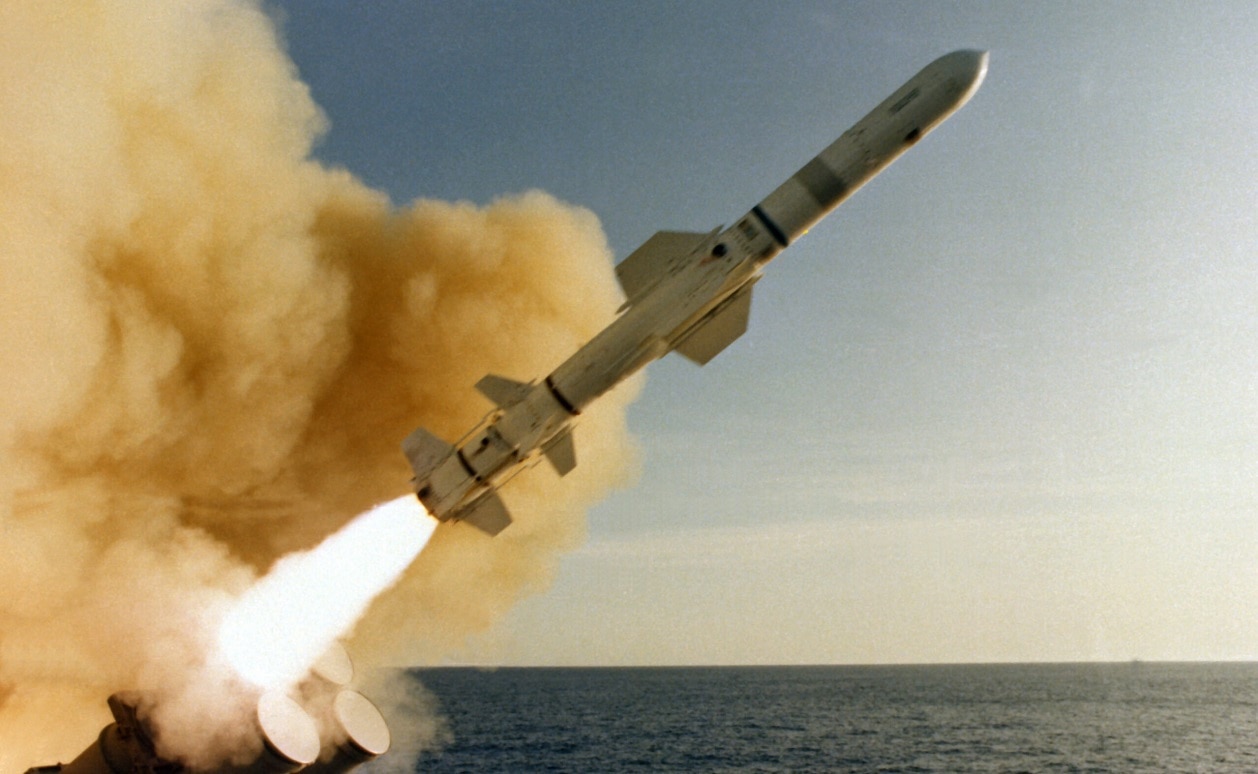NATO member-states have provided Kyiv with truly staggering amounts of aid since the onset of Russia’s invasion. Cash, a plethora of weapons, and training from the West have helped Ukraine defend itself for more than 14 months.
The advanced weaponry used by Ukraine at the front line includes the American-made Harpoon anti-ship missile. Denmark was the first country to provide Harpoons, which it sent along with self-propelled howitzers last May. In the early weeks of warfare, Kyiv used its homegrown Neptune anti-ship missile to sink the Russian navy’s flagship, Moskva. In the months since that success, the addition of Harpoons to Kyiv’s weapons arsenal has greatly enhanced the country’s naval capabilities.
Introducing the Harpoon Missile
The U.S. Navy in the 1960s started to conceptualize a longer-range missile for use against surfaced enemy submarines. The true devastation that anti-ship missiles fired from submarines could cause became apparent to U.S. defense officials when a Soviet-designed Styx anti-ship missile took down the Israeli destroyer Eilat. Since submarines are often nicknamed “whales,” the U.S. appropriately dubbed its new weapon “harpoon.” While the weapon was later repurposed to be an anti-ship missile, the nickname stuck.
Specs and Capabilities
McDonnell Douglas (now Boeing Defense, Space & Security), developed the all-weather, over-the-horizon Harpoon in 1975. Since then, more than 7,000 of these missiles have been produced.
They currently serve multiple militaries, including India, Israel, Chile, Brazil, and Pakistan. By 1977, the U.S. Navy had adapted the Harpoon as its standard anti-ship missile.
The Harpoon has been fitted on the P-3 Orion, the F/A-18 Hornet and the B-52H, among other airframes.
As detailed by the Center for Strategic and International Studies, “The air-launched Block 1 E (AGM-84E), known as the Standoff Land Attack Missile (SLAM), enabled the targeting of land-based assets. An extended response SLAM (SLAM-ER) first flew in 1997, doubling the SLAM’s range, as well as introducing Automatic Targeting Acquisition (ATA) technology. The Harpoon Block II, unveiled in 2009, features autonomous, over-the-horizon range, and can execute both land and air strikes.5 Block II+ is currently in development.”
The Harpoon was deployed in a handful of combat operations throughout the 1980s, including the Iran-Iraq War, the U.S.-Libya conflicts, and U.S. operations in the Persian Gulf. The latest iteration of the Harpoon features enhanced resistance to countermeasures, in addition to better targeting.
How Ukraine Has Used the Harpoon
In June, RGM-84 Harpoon missile systems were reportedly used to sink a Russian tugboat in the Black Sea. The strike on Moscow’s Vasiliy Bekh tugboat marked the first instance where Kyiv publicly acknowledged its deployment of the Harpoon missile system — Ukrainian officials released footage on Telegram depicting a pair of Harpoons striking the tugboat.
This was two months after Ukrainian forces sank the Moskva, and these two events indicated the true extent of Kyiv’s naval capabilities, especially with Western-delivered anti-ship missiles added to the arsenal. Harpoons and other near-peer systems sent to Kyiv have helped keep Russia’s Black Sea fleet from carrying out amphibious operations against ports like Odesa.
MORE: The F-35 Now Comes in Beast Mode
MORE: Why the U.S. Navy Tried to Sink Their Own Aircraft Carrier
Maya Carlin, a Senior Editor for 19FortyFive, is an analyst with the Center for Security Policy and a former Anna Sobol Levy Fellow at IDC Herzliya in Israel. She has by-lines in many publications, including The National Interest, Jerusalem Post, and Times of Israel. You can follow her on Twitter: @MayaCarlin.

